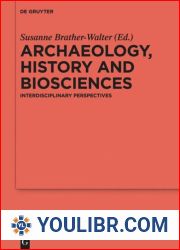
BOOKS - HISTORY - Knossos Myth, History and Archaeology

Knossos Myth, History and Archaeology
Author: James Whitley
Year: 2023
Format: PDF
File size: 79,5 MB
Language: ENG
Year: 2023
Format: PDF
File size: 79,5 MB
Language: ENG
. The history of Knossos has been pieced together by many generations of archaeologists who have explored the site over the past two centuries and this book tells that story. The plot of 'Knossos Myth, History and Archaeology' revolves around the development of the site of Knossos from prehistory to the present day. The first chapter begins with an overview of the geography of Crete, followed by an examination of the earliest known human activity there-the arrival of farmers in the early Neolithic period. The following chapters trace the growth of Knossos into a major urban center through the rise of the palace civilization and its eventual decline. In the final chapters, the authors examine the modern reception of Knossos and its role as a cultural symbol of Crete and the wider world. The book is divided into six chapters: Chapter one provides an introduction to the island of Crete and the geographical context of Knossos. Chapter two explores the beginnings of Knossos, looking at the arrival of farmers in the early Neolithic period and how they developed their agriculture and their way of life. Chapter three focuses on the development of the palace society and the political and social changes that occurred during this time period. Chapter four looks at the decline of Knossos and the end of the Minoan civilization.
.История Кносса была собрана вместе многими поколениями археологов, которые исследовали место за последние два века, и эта книга рассказывает эту историю. Сюжет «Кносского мифа, истории и археологии» вращается вокруг развития места Кносса от предыстории до наших дней. Первая глава начинается с обзора географии Крита, за которым следует исследование самой ранней известной человеческой деятельности там - прибытия фермеров в период раннего неолита. В следующих главах прослеживается рост Кносса в крупный городской центр через подъём дворцовой цивилизации и её возможный упадок. В заключительных главах авторы рассматривают современный приём Кносса и его роль как культурного символа Крита и мира в целом. Книга разделена на шесть глав: Первая глава содержит введение в остров Крит и географический контекст Кносса. Вторая глава исследует начало Кносса, рассматривая прибытие фермеров в период раннего неолита и то, как они развивали свое сельское хозяйство и свой образ жизни. Глава третья посвящена развитию дворцового общества и политическим и социальным изменениям, произошедшим в этот период времени. В четвертой главе рассматривается упадок Кносса и конец минойской цивилизации.
. L'histoire de Knoss a été rassemblée par de nombreuses générations d'archéologues qui ont exploré le site au cours des deux derniers siècles, et ce livre raconte cette histoire. L'histoire du mythe de Knos, de l'histoire et de l'archéologie tourne autour du développement du lieu de Knoss, de l'histoire à nos jours. premier chapitre commence par un aperçu de la géographie de la Crète, suivi d'une étude de la plus ancienne activité humaine connue là-bas - l'arrivée des agriculteurs pendant la période néolithique précoce. s chapitres suivants montrent la croissance de Knoss dans un grand centre urbain à travers l'ascension de la civilisation du palais et son éventuel déclin. Dans les derniers chapitres, les auteurs considèrent l'accueil moderne de Knoss et son rôle en tant que symbole culturel de la Crète et du monde en général. livre est divisé en six chapitres : premier chapitre contient une introduction à l'île de Crète et le contexte géographique de Knossos. deuxième chapitre examine les débuts de Knoss, en examinant l'arrivée des agriculteurs au début du Néolithique et la façon dont ils ont développé leur agriculture et leur mode de vie. troisième chapitre traite du développement de la société du palais et des changements politiques et sociaux qui ont eu lieu pendant cette période. quatrième chapitre traite du déclin de Knoss et de la fin de la civilisation minoenne.
. La historia de Knoss ha sido reunida por muchas generaciones de arqueólogos que han investigado el lugar en los últimos dos siglos, y este libro cuenta esta historia. La trama del «Mito de Knose, Historia y Arqueología» gira en torno al desarrollo del yacimiento de Knoss desde la prehistoria hasta la actualidad. primer capítulo comienza con una revisión de la geografía de Creta, seguida de un estudio de la actividad humana más temprana conocida allí - la llegada de los agricultores durante el período neolítico temprano. En los siguientes capítulos se observa el crecimiento de Knoss hacia un gran centro urbano a través del ascenso de la civilización palaciega y su posible declive. En los capítulos finales, los autores consideran la recepción moderna de Knoss y su papel como símbolo cultural de Creta y del mundo en general. libro está dividido en seis capítulos: primer capítulo contiene una introducción a la isla de Creta y el contexto geográfico de Knoss. segundo capítulo explora el comienzo de Knoss, considerando la llegada de los agricultores durante el Neolítico temprano y cómo desarrollaron su agricultura y su estilo de vida. capítulo tres trata sobre el desarrollo de la sociedad palaciega y los cambios políticos y sociales que se produjeron en este periodo de tiempo. cuarto capítulo examina el declive de Knoss y el fin de la civilización minoica.
A história de Knoss foi reunida por muitas gerações de arqueólogos que exploraram o local nos últimos dois séculos, e este livro conta essa história. «O Mito de Knose, História e Arqueologia» gira em torno do desenvolvimento do lugar de Knose desde a história até aos dias de hoje. O primeiro capítulo começa com uma revisão da geografia de Creta, seguida por uma pesquisa sobre a atividade humana mais precoce conhecida ali - a chegada de agricultores no período neolítico precoce. Os capítulos seguintes mostram o crescimento de Knose em um grande centro urbano através da ascensão da civilização palaciana e sua possível decadência. Nos capítulos finais, os autores consideram a recepção contemporânea de Knose e seu papel como símbolo cultural de Creta e do mundo em geral. O livro está dividido em seis capítulos: o primeiro capítulo contém a introdução à ilha de Creta e o contexto geográfico de Knoss. O segundo capítulo explora o início de Knoss, considerando a chegada de agricultores no período neolítico precoce e como eles desenvolveram sua agricultura e seu estilo de vida. O capítulo 3 trata do desenvolvimento da sociedade palaciana e das mudanças políticas e sociais ocorridas durante este período de tempo. O capítulo 4 aborda o declínio de Knoss e o fim da civilização minoica.
.La storia di Knoss è stata riunita da generazioni di archeologi che hanno esplorato il luogo negli ultimi due secoli, e questo libro racconta questa storia. La storia e l'archeologia di Knose ruota intorno allo sviluppo del luogo di Knoss dalla storia ai giorni nostri. Il primo capitolo inizia con una panoramica della geografia di Creta, seguita da uno studio sulle attività umane più antiche, l'arrivo degli agricoltori durante il neolitico precoce. I seguenti capitoli mostrano la crescita di Knoss in un grande centro urbano attraverso l'ascesa della civiltà di palazzo e il suo possibile declino. Nei capitoli finali, gli autori considerano l'accoglienza moderna di Knoss e il suo ruolo come simbolo culturale di Creta e del mondo in generale. Il libro è suddiviso in sei capitoli: il primo capitolo contiene l'introduzione all'isola di Creta e il contesto geografico di Knoss. Il secondo capitolo esplora l'inizio di Knoss, considerando l'arrivo degli agricoltori durante il neolitico precoce e come hanno sviluppato la loro agricoltura e il loro stile di vita. Il terzo capitolo è dedicato allo sviluppo della società di palazzo e ai cambiamenti politici e sociali avvenuti in questo periodo di tempo. Il capitolo quattro affronta il declino di Knoss e la fine della civiltà minoica.
.Die Geschichte von Knossos wurde von vielen Generationen von Archäologen zusammengetragen, die den Ort in den letzten zwei Jahrhunderten erforscht haben, und dieses Buch erzählt diese Geschichte. Die Handlung von „Der Mythos von Knossos, Geschichte und Archäologie“ dreht sich um die Entwicklung des Ortes Knossos von der Vorgeschichte bis zur Gegenwart. Das erste Kapitel beginnt mit einem Überblick über die Geographie Kretas, gefolgt von einer Studie über die früheste bekannte menschliche Aktivität dort - die Ankunft von Bauern in der frühen Jungsteinzeit. Die folgenden Kapitel zeichnen Knossos'Aufstieg zu einem großen städtischen Zentrum durch den Aufstieg der Palastzivilisation und ihren möglichen Niedergang nach. In den letzten Kapiteln untersuchen die Autoren Knossos "zeitgenössische Rezeption und seine Rolle als kulturelles Symbol Kretas und der Welt im Allgemeinen. Das Buch ist in sechs Kapitel gegliedert: Das erste Kapitel enthält eine Einführung in die Insel Kreta und den geografischen Kontext von Knossos. Das zweite Kapitel untersucht die Anfänge von Knossos und untersucht die Ankunft der Bauern in der frühen Jungsteinzeit und wie sie ihre Landwirtschaft und ihre bensweise entwickelten. Kapitel drei widmet sich der Entwicklung der Palastgesellschaft und den politischen und sozialen Veränderungen, die in dieser Zeit stattgefunden haben. Das vierte Kapitel befasst sich mit dem Niedergang von Knossos und dem Ende der minoischen Zivilisation.
Historia Knossos została połączona przez wiele pokoleń archeologów, którzy badali to miejsce w ciągu ostatnich dwóch wieków, a ta książka opowiada tę historię. Fabuła „Knossos Mit, Historia i Archeologia” obraca się wokół rozwoju miejsca Knossos od prehistorii do dnia dzisiejszego. Pierwszy rozdział rozpoczyna się od przeglądu geografii Krety, a następnie badania najwcześniejszej znanej tam działalności człowieka - przybycia rolników we wczesnym okresie neolitu. Poniższe rozdziały śledzą rozwój Knossos w głównym centrum miejskim poprzez powstanie cywilizacji pałacowej i jej ewentualny spadek. W końcowych rozdziałach autorzy uważają współczesne przyjęcie Knossosu i jego rolę za symbol kulturowy Krety i całego świata. Księga podzielona jest na sześć rozdziałów: Pierwszy rozdział zawiera wprowadzenie na wyspę Kreta i kontekst geograficzny Knossos. Drugi rozdział bada początki Knossos, patrząc na przybycie rolników we wczesnym okresie neolitu i jak rozwinęli swoje rolnictwo i sposób życia. Rozdział trzeci poświęcony jest rozwojowi społeczeństwa pałacowego oraz zmianom politycznym i społecznym, jakie zaszły w tym okresie. Czwarty rozdział dotyczy upadku Knossosu i końca cywilizacji minojskiej.
ההיסטוריה של קנוסוס הובאה יחד על ידי דורות רבים של ארכיאולוגים שחקרו את האתר במהלך שתי המאות האחרונות, וספר זה מספר את הסיפור הזה. העלילה של ”Knossos Myth, History and Archaeology” סובבת סביב התפתחות אתר קנוסוס מפרהיסטוריה ועד ימינו. הפרק הראשון מתחיל בסקירה של הגאוגרפיה של כרתים, ולאחריו מתבצע מחקר של הפעילות האנושית המוקדמת ביותר הידועה שם - הגעתם של חקלאים בתקופה הנאוליתית הקדומה. הפרקים הבאים עוקבים אחר צמיחתו של קנוסוס למרכז עירוני גדול, דרך עלייתה של תרבות הארמון והידרדרותה האפשרית. בפרקים האחרונים מחשיבים המחברים את קבלת הפנים המודרנית של קנוסוס ואת תפקידה כסמל תרבותי של כרתים ושל העולם כולו. הספר מחולק לשישה פרקים: הפרק הראשון מכיל הקדמה לאי כרתים וההקשר הגיאוגרפי של קנוסוס. הפרק השני בוחן את ראשיתו של קנוסוס, בהתבוננו בבואם של החקלאים בתקופה הנאוליתית המוקדמת וכיצד פיתחו את החקלאות שלהם ואת אורח חייהם. הפרק השלישי מוקדש להתפתחות חברת הארמון ולשינויים הפוליטיים והחברתיים שהתרחשו בתקופה זו. הפרק הרביעי עוסק בדעיכתה של נוסוס ובסופה של התרבות המינואית.''
Knossos'un tarihi, son iki yüzyıl boyunca bölgeyi araştıran birçok kuşak arkeolog tarafından bir araya getirildi ve bu kitap bu hikayeyi anlatıyor. "Knossos Miti, Tarihi ve Arkeolojisi'nin konusu, Knossos bölgesinin tarih öncesinden günümüze gelişimi etrafında dönüyor. İlk bölüm, Girit coğrafyasına genel bir bakışla başlar, ardından orada bilinen en eski insan faaliyetinin incelenmesi - erken Neolitik dönemde çiftçilerin gelişi. Aşağıdaki bölümler, Knossos'un saray uygarlığının yükselişi ve olası düşüşü ile büyük bir şehir merkezine dönüşmesini izlemektedir. Son bölümlerde, yazarlar Knossos'un modern kabulünü ve Girit'in ve bir bütün olarak dünyanın kültürel bir sembolü olarak rolünü ele alıyorlar. Kitap altı bölüme ayrılmıştır: Ilk bölüm Girit adasına ve Knossos'un coğrafi bağlamına bir giriş içermektedir. İkinci bölüm, Knossos'un başlangıcını, erken Neolitik dönemde çiftçilerin gelişini ve tarımlarını ve yaşam biçimlerini nasıl geliştirdiklerini araştırıyor. Üçüncü bölüm, saray toplumunun gelişimine ve bu dönemde meydana gelen siyasi ve sosyal değişikliklere ayrılmıştır. Dördüncü bölüm Knossos'un çöküşünü ve Minos uygarlığının sonunu ele alır.
تم جمع تاريخ كنوسوس من قبل أجيال عديدة من علماء الآثار الذين استكشفوا الموقع على مدار القرنين الماضيين، وهذا الكتاب يروي هذه القصة. تدور حبكة «أسطورة كنوسوس والتاريخ وعلم الآثار» حول تطوير موقع كنوسوس من عصور ما قبل التاريخ حتى يومنا هذا. يبدأ الفصل الأول بلمحة عامة عن جغرافيا جزيرة كريت، تليها دراسة عن أقدم نشاط بشري معروف هناك - وصول المزارعين في أوائل العصر الحجري الحديث. تتبع الفصول التالية نمو كنوسوس إلى مركز حضري رئيسي من خلال صعود حضارة القصر واحتمال انحدارها. في الفصول الأخيرة، يعتبر المؤلفون الاستقبال الحديث لكنوسوس ودوره كرمز ثقافي لجزيرة كريت والعالم ككل. ينقسم الكتاب إلى ستة فصول: يحتوي الفصل الأول على مقدمة لجزيرة كريت والسياق الجغرافي لكنوسوس. يستكشف الفصل الثاني بدايات كنوسوس، وينظر في وصول المزارعين في أوائل العصر الحجري الحديث وكيف طوروا زراعتهم وطريقة حياتهم. الفصل الثالث مكرس لتنمية مجتمع القصر والتغيرات السياسية والاجتماعية التي حدثت خلال هذه الفترة الزمنية. يتناول الفصل الرابع تدهور كنوسوس ونهاية الحضارة المينوسية.
크노소스의 역사는 지난 2 세기 동안이 사이트를 탐험 한 여러 세대의 고고학자들에 의해 만들어졌으며이 책은이 이야기를 들려줍니다. "Knossos Myth, History and Archaeology" 의 음모는 선사 시대부터 현재까지 Knossos 사이트의 개발을 중심으로 진행됩니다. 첫 번째 장은 크레타 섬의 지리에 대한 개요로 시작하여 신석기 시대 초기에 농부들이 도착한 최초의 알려진 인간 활동에 대한 연구로 시작됩니다. 다음 장들은 궁전 문명의 부상과 가능한 쇠퇴를 통해 크노소가 주요 도시 중심으로 성장한 것을 추적합니다. 마지막 장에서 저자들은 현대의 크노소스 리셉션과 크레타와 세계 전체의 문화적 상징으로서의 역할을 고려합니다. 이 책은 6 개의 장으로 나뉩니다. 첫 번째 장에는 크레타 섬에 대한 소개와 크노소스의 지리적 맥락이 포함되어 있습니다. 두 번째 장은 초기 신석기 시대에 농부들의 도착과 그들이 어떻게 농업과 삶의 방식을 발전 시켰는지를보고 크노소스의 시작을 탐구합니다. 3 장은 궁전 사회의 발전과이시기에 일어난 정치적, 사회적 변화에 전념하고 있습니다. 네 번째 장은 크노소스의 쇠퇴와 미노아 문명의 종말을 다룬다.
クノッソスの歴史は、過去2世紀にわたってサイトを探索してきた考古学者の多くの世代によってまとめられています、この本は、この物語を語ります。「クノッソス神話、歴史、考古学」のプロットは、先史時代から現在までのクノッソス遺跡の開発を中心に展開しています。最初の章はクレタ島の地理の概観から始まり、続いてそこで最も初期に知られている人間の活動、すなわち新石器時代初期の農民の到来についての研究が行われた。以下の章では、宮殿文明の台頭と衰退の可能性を通じて、クノッソスの主要な都市中心部への成長をたどる。最後の章では、クノッソスの近代的な受容とクレタ島の文化的シンボルとしての役割、そして世界全体としての役割について考察している。この本は6つの章に分かれています。最初の章にはクレタ島の紹介とクノッソスの地理的文脈が含まれています。第2章では、クノッソスの始まりを探り、新石器時代初期の農民の到来と、農業とその生活様式をどのように発展させたかを調べます。第3章は宮殿社会の発展と、この時期に起こった政治的・社会的変化に捧げられている。第4章ではクノッソスの衰退とミノア文明の終焉を扱っている。
. Knoss的歷史是由過去兩個世紀探索該遺址的許多代考古學家收集的,本書講述了這個故事。「克諾索斯神話,歷史和考古學」的情節圍繞著克諾索斯遺址從背景到今天的發展。第一章首先回顧克裏特島的地理狀況,然後研究那裏最早的人類活動-新石器時代早期農民的到來。在以下章節中,可以追溯到克諾索斯(Knoss)通過宮殿文明的興起及其最終衰落而發展成為主要城市中心。在最後的章節中,作者考慮了克諾索斯的現代接受及其作為克裏特島乃至整個世界的文化象征的作用。該書分為六章:第一章介紹了克裏特島和克諾索斯的地理背景。第二章探討了克諾索斯的開始,回顧了新石器時代早期農民的到來,以及他們如何發展農業和生活方式。第三章論述了宮殿社會的發展以及這一時期發生的政治和社會變化。第四章探討了克諾索斯的衰落和米諾斯文明的終結。













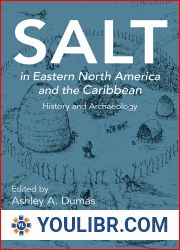
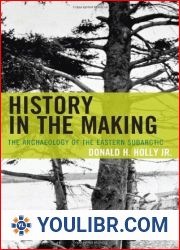

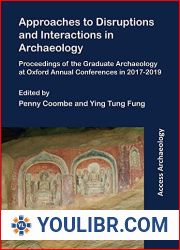
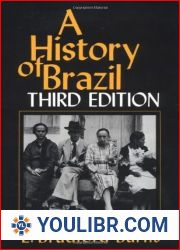
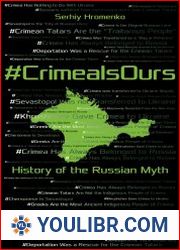
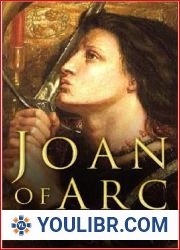
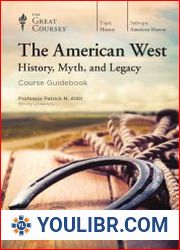
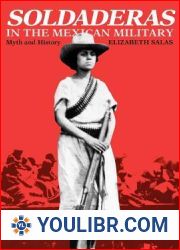
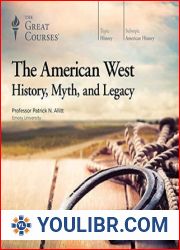
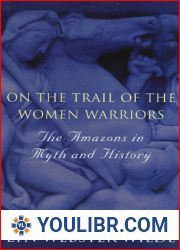
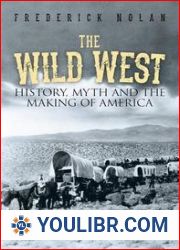
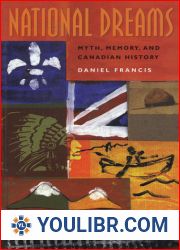



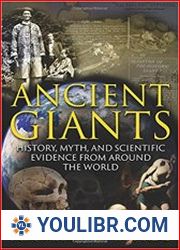
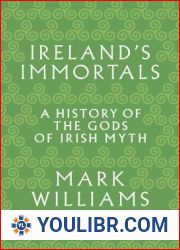
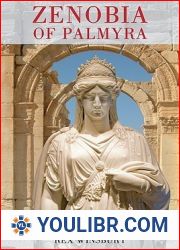

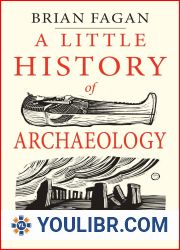










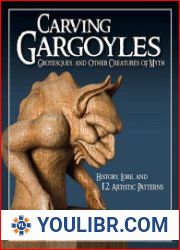

![[History and Myth in Romanian Consciousness] [Author: Boia, Lucian] [January, 2001] [History and Myth in Romanian Consciousness] [Author: Boia, Lucian] [January, 2001]](https://youlibr.com/img/7/766145_oc.jpg)

